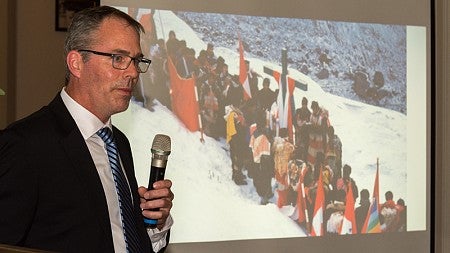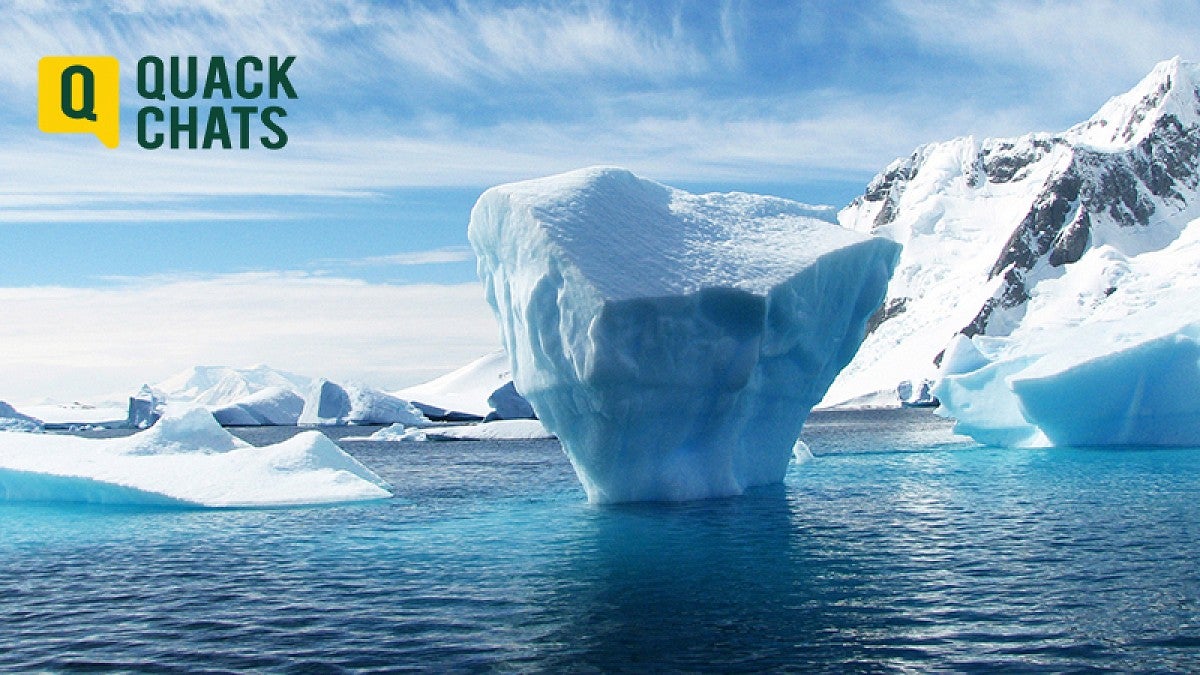For 20 years, Mark Carey has studied ice, focusing most of his time on glacier-affected areas in Peru, South America. In a Sept. 26 Quack Chats pub talk, however, Carey will take the audience into the world of North Atlantic icebergs.
“I want people to think about ice and icebergs not as some distant, remote, unimportant eye candy or emblem for climate change, but as an integral part of our society over time,” said Carey, a professor of history in the Clark Honors College and director of the UO’s Environmental Studies Program.

Carey’s pub talk, “What is an Iceberg? Redefining Ice from Cultural and Historical Perspectives,” will be a sneak preview of a book he’s hoping to publish in a year or two. The talk will begin at 6 p.m. at the Ax Billy Grill & Sports Bar, on the third floor of the Downtown Athletic Club, 999 Willamette St. Admission is free. Food and drinks will be available for purchase.
The last 150 years is the time period he will cover in his book, which is being written as part of his National Science Foundation-supported research. It is a swath of time, Carey said, in which icebergs have changed the world and captured people’s imagination.
Such fascination, Carey said, is seen in the famous painting, “The Icebergs,” which is the focus of Carey’s first chapter. A copy of the painting hangs on a wall in his Chapman Hall office. The original oil-on-canvas depiction of icebergs off Newfoundland was completed in 1861 by American landscape artist Frederic Edwin Church. Not long after, it went missing, emerging in 1979 and selling for $2.5 million. The original now hangs in the Dallas Museum of Art in Texas.
Carey’s talk will consider the influence of icebergs on early telegraph communication lines, tourism, the science of ocean currents and rising seas, the shipping industry and, even, the offshore oil industry, which recently experienced a near-miss as an iceberg came close to an oil rig off the coast of Newfoundland.
Carey’s long-running research on glaciers has touched on climate change, glacier-society interactions, natural disasters, mountaineering, water, and health and medicine.
Carey, who earlier this month received a King Albert Mountain Award in Switzerland mostly for his research in the Andes Mountains in Peru, is in the final year of an National Science Foundation Career Award “Glaciers and Glaciology: How Nature, Field Research, and Societal Forces Shape the Earth Sciences.”
He is also is involved in a collaborative grant, also from the National Science Foundation, with UO oceanographer Dave Sutherland on “The Impact of Oceanic Forcing on the Melting of West Antarctic Peninsula Glaciers.”
Quack Chats is a program of University Communications. For more information, see the Quack Chats section on Around the O. A general description of Quack Chats and a calendar of additional Quack Chats and associated public events also can be found on the UO’s Quack Chats website.
—By Jim Barlow, University Communications


